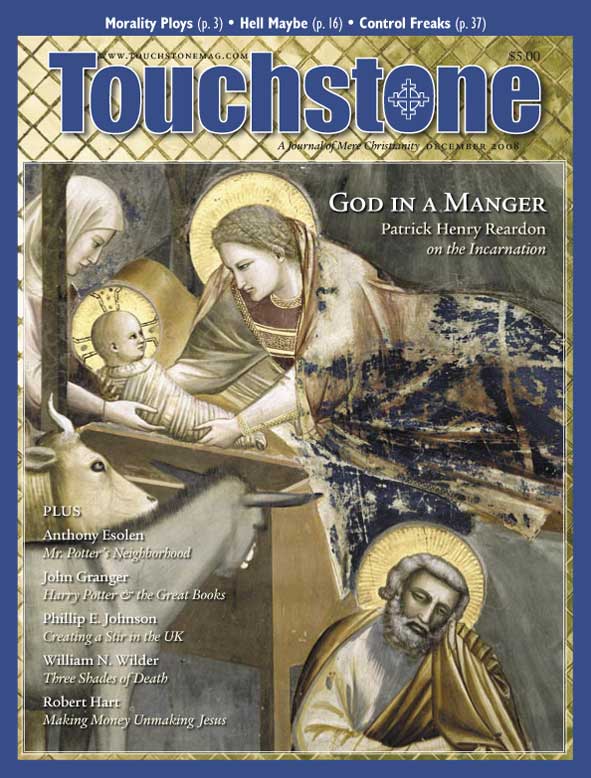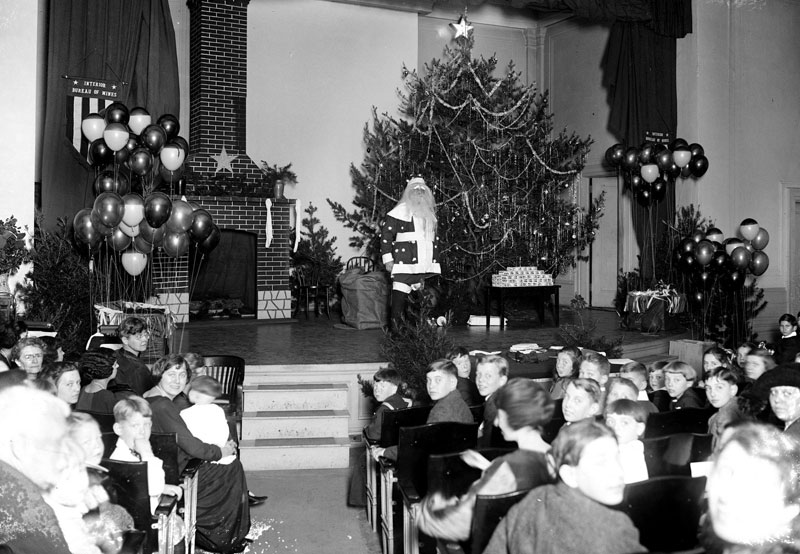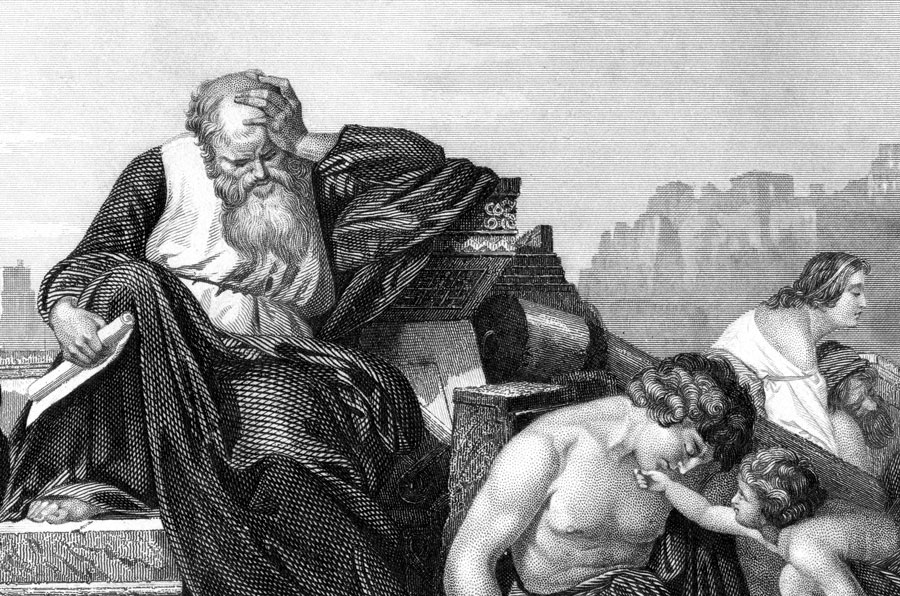Feature
Savior in a Manger
Early Christian Teaching on the Incarnation & Redemption
Advent and the Christmas season form an ideal time, surely, during which to ponder the meaning—especially the soteriological meaning—of the Incarnation. The question, Cur Deus homo—“Why did God become man?”—rises spontaneously to the healthy Christian mind, I believe, and it is a fact that Christians began addressing that question rather early. The Council of Nicaea declared simply that the Incarnation took place “for us men and for our salvation,” a formula adopted without change by the Council of Chalcedon somewhat more than a century later. That is to say, it is a dogma of those councils that God’s intent in the Incarnation was soteriological: It had to do with man’s salvation.
Nonetheless, the history of theology has witnessed a certain diversity in the ways this soteriological intent of the Incarnation was expressed. More specific answers to the question “Why did God become man?” depended in no small measure on the meaning of salvation, and Christians, even from New Testament times, have described salvation itself from fairly different perspectives. God’s redemption of man is a marvelously rich reality—according to the Psalmist, copiosa apud Eum redemptio—so we should expect a variety of conceptual approaches to it.
In the reflections that follow, I want to consider the soteriological aspect of the Incarnation in our earliest sources, the period long prior to the major divisions of the churches. The selection of these sources, though limited, is not random. I have picked these particular writers, because the Christian Tradition itself has ever recognized them as authentic voices of the original apostolic message. Since this is a study of written sources, I propose to begin with our first literary theologian, St. Paul.
Christ & Adam
Arguably among the earliest themes of Christian soteriology was a contrast between Christ and Adam. The letters of Paul are obviously the literary font of this contrast, chiefly in two places, the earlier being 1 Corinthians 15, and the second Romans 5. These two texts differ, however, in emphasis and application.
In the slightly earlier text, 1 Corinthians 15, Paul’s argument may be called cosmological, because it has to do with the quality of created matter, the “dust” of Genesis 2–3. Paul’s argument in this text is largely centered on Adam’s legacy of death and corruption, to which the apostle contrasts the immortality of the body achieved through the Resurrection of Christ: Adam, he says, was formed of dust (Gen. 2), to which he returned by reason of the Fall (Gen. 3). Nonetheless, Paul goes on, because of Christ’s Resurrection from the dead, this inheritance of corruption from Adam is not the final word about the human prospect.
Although humanity certainly shares in Adam’s corruption, in Christ it is made to share in the incorruptibility of the Resurrection: “The body is sown in corruption, it is raised in incorruption” (1 Cor. 15:42). Thus, “as we have borne the image of the man of dust, we shall also bear the image of the heavenly Man” (15:49). By rising from the dead, in short, Christ conferred immortality on the flesh he assumed in the Incarnation. As will be evident presently, it is impossible to overestimate the importance of this argument in the Patristic answer to the question, Cur Deus homo?
In the second and later text, Romans 5, Paul returns to the contrast between Adam and Christ, but now with a different emphasis and application. He here develops the same theme from a historical rather than a cosmological perspective. That is to say, his interest in Romans is man’s history (life in time) rather than his physical composition (life in matter).
Whereas in Adam, Paul argues, “sin entered the world, and death through sin,” through the obedience of Christ “many will be made righteous” (Rom. 5:12,19). In short, “if by the one man’s offense many died, much more the grace of God and the gift by the grace of the one Man, Jesus Christ, abounded to many” (5:15).
Each of these two Pauline contrasts between Adam and Christ serves the general concern of the specific epistle in which it appears. In 1 Corinthians, it is the Paschal Mystery (“Christ, our Passover, was sacrificed for us,” says 1 Corinthians 5:7), whereas in Romans it is justification. The Romans text, which treats of the obedience of Christ, reflects the theology of Good Friday. First Corinthians, which is concerned with the Resurrection, pertains to the theology of Easter Sunday. Both themes, as we shall see, are developed in the early church fathers.
Patrick Henry Reardon is pastor emeritus of All Saints Antiochian Orthodox Church in Chicago, Illinois, and the author of numerous books, including, most recently, Out of Step with God: Orthodox Christian Reflections on the Book of Numbers (Ancient Faith Publishing, 2019).
subscription options
Order
Print/Online Subscription

Get six issues (one year) of Touchstone PLUS full online access including pdf downloads for only $39.95. That's only $3.34 per month!
Order
Online Only
Subscription

Get a one-year full-access subscription to the Touchstone online archives for only $19.95. That's only $1.66 per month!
bulk subscriptions
Order Touchstone subscriptions in bulk and save $10 per sub! Each subscription includes 6 issues of Touchstone plus full online access to touchstonemag.com—including archives, videos, and pdf downloads of recent issues for only $29.95 each! Great for churches or study groups.
Transactions will be processed on a secure server.
more on Christmas from the online archives
more from the online archives
calling all readers
Please Donate
"There are magazines worth reading but few worth saving . . . Touchstone is just such a magazine."
—Alice von Hildebrand
"Here we do not concede one square millimeter of territory to falsehood, folly, contemporary sentimentality, or fashion. We speak the truth, and let God be our judge. . . . Touchstone is the one committedly Christian conservative journal."
—Anthony Esolen, Touchstone senior editor














